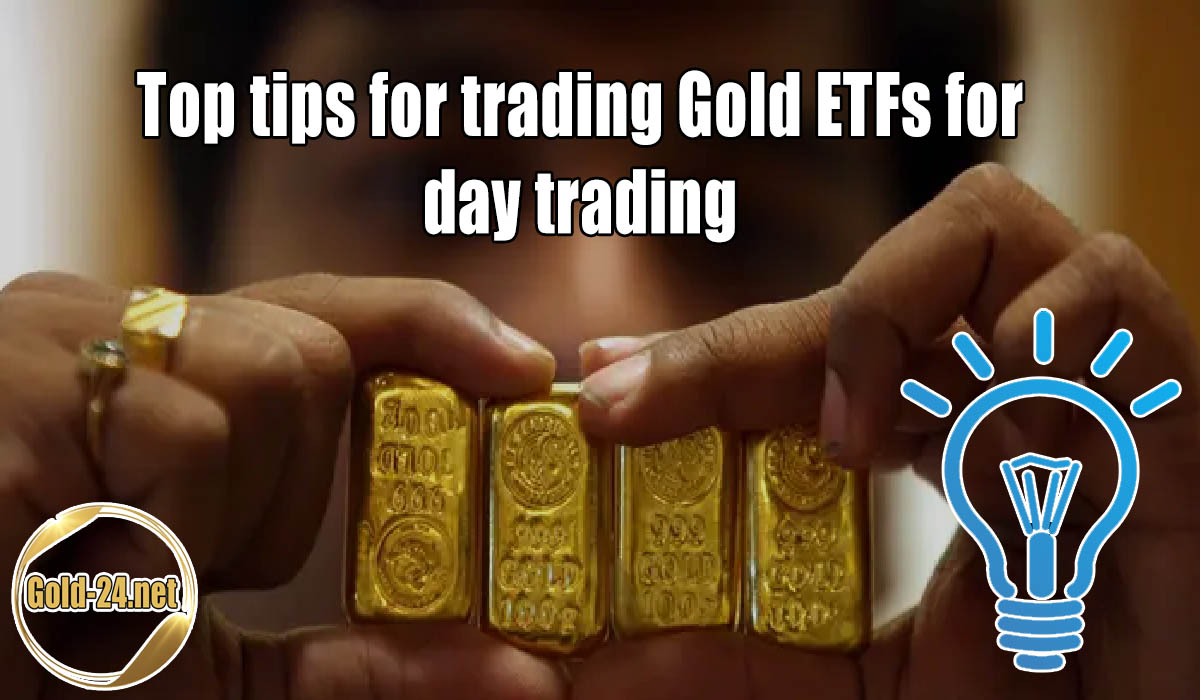Top tips for trading Gold ETFs for day trading
Top tips for trading Gold ETFs for day trading
Gold trade exchanged reserves (ETFs) are one of the easiest ways of exchanging Gold. There are Gold ETFs with heaps of liquidity, and dissimilar to fates, the ETFs don’t lapse. Gold ETFs additionally offer variety: exchange the cost of Gold, or exchange an ETF connected with Gold makers.
Gold, as different resources, moves in long haul patterns. Those patterns draw in huge quantities of merchants at specific points, giving the most ideal day-exchanging conditions. This is the way to exploit this.
Top tips for trading Gold
- Gold moves in long-haul patterns, making it appealing to countless dealers and giving ideal day-exchanging conditions.
- For specialized investigators, exchanging Gold can utilize a few sorts of Gold-following protections including ETFs, unit venture trusts, and Gold digger stocks.
- While ETFs track Gold’s cost in a roundabout way by means of subsidiaries contracts held by the asset, unit trusts, for example, GLD and IAU really purchase and hold actual Gold.
- Understanding the value conduct of these various instruments can assist with recognizing section focuses and exits for transient exchanges and affirm patterns and inversions.
Gold ETFs versus Unit Trusts
In fact, although some of the Gold exchange-traded funds are sometimes referred to as ETFs, they are really unit trust funds. Unit speculation funds (UITs) really do own Gold. Of course, an ETF is a resource that will constantly put assets into things that track Gold expenditures, similar to Gold odds. Both ETFs and Trust Funds are acceptable for day trading purposes.
All things considered
The iShares Gold Trust is around one-fifth the cost of the SPDR Gold Trust, and it will subsequently have more modest intraday development in outright dollar terms, yet the lower cost implies that bigger amounts can be exchanged.
The SPDR Gold Trust’s cost and size make it better for the day-to-day exchange.
Well-known Gold-excavator ETFs — reserves that purchase Gold-digger stocks and mirror their presentation — are the VanEck Vectors Gold Diggers ETF (GDX), with around 26.8 million offers in day-to-day volume.
When to Day-Exchange Gold Trusts and ETFs
Unpredictability is an informal investor’s companion. Continuous cost development, combined with liquidity, makes the more prominent potential for benefits (and misfortunes) in a brief time frame.
Center around Gold ETFs and trusts when the everyday cost is fluctuating something like 2%. Apply a 14-day normal genuine reach (ATR) pointer to a Gold everyday graph, then partition the ongoing ATR esteem by the ETFs or alternately trust’s ongoing cost, and increase the outcome by 100. On the off chance that the number isn’t over 2, then, at that point, the market isn’t great for day-exchanging Gold ETFs or trusts.
The Gold Digger and Junior Gold Excavator ETFs are regularly more unstable than the Gold trusts. At the point when the cost of Gold is consistent, the Gold excavators might offer somewhat more day-exchanging open doors because of their more prominent instability.
Gold mine ETFs and day trading trust funds
At the point when the SPDR Gold Trust is moving over 2% per day, center around it. Assuming the trust is moving under 2%, exchange one of the Gold-excavator ETFs. These are the suggested conditions for day exchanging, albeit the Gold trusts and ETFs can be exchanged utilizing the accompanying technique in any event, during non-unpredictable (under 2% everyday development) times.
Exchanges are just steered in the pattern’s bearing. The cost should have as of late made a swing high for an upswing, and you are hoping to enter on a pullback. Eventually, during the pullback, the cost should stop for no less than a few cost bars (a couple of moment diagrams). A respite is a little union where the cost quits gaining ground to the drawback and moves all the more horizontally.
Day-Trading Gold Targets
The methodology endeavors to catch moving moves in Gold-related ETFs and trusts. This ought to in a perfect world be done when there is sufficient market unpredictability. In any case, the patterns are bound to hit a wall and not arrive at our benefit target.
The benefit target depends on the difference in your gamble. At the point when everyday instability is close to 2%, hold back nothing objective twice your gamble. At the point when instability approaches 4% and there are major areas of strength for an intraday and on the day-to-day diagram, go for the Gold objective that is three or perhaps even multiple times your gamble.
The methodology isn’t without entanglements. One of the main pressing concerns is that the respite inside the pullback can be very huge, making the pause and hazard very enormous. There may likewise be different stops inside a pullback; picking which one to exchange can be fairly emotional. In the event that there is no respite — simply a sharp pullback and sharp move back in the moving bearing — the methodology will leave you without an exchange.
The benefit target is fixed at numerous hazards to remunerate dealers for facing that challenge. The cost might give indications of an inversion, however, before the objective is reached.
A discretionary step is to move the stop to simply beneath new lows as they structure during an upswing or drop the stop down to above new highs as they structure during a downtrend. The stop is moving with the pattern — going about as a following stop — and secures in a portion of the increases or diminish the misfortune on the off chance that the pattern switches.


